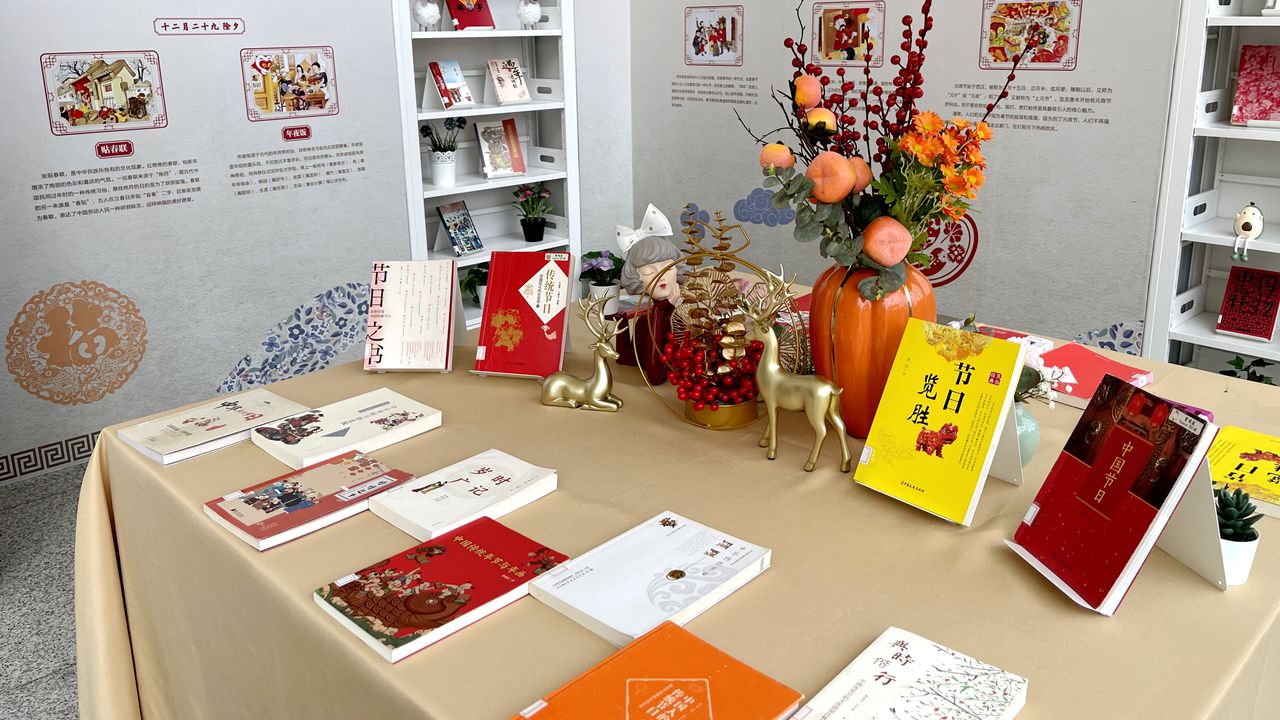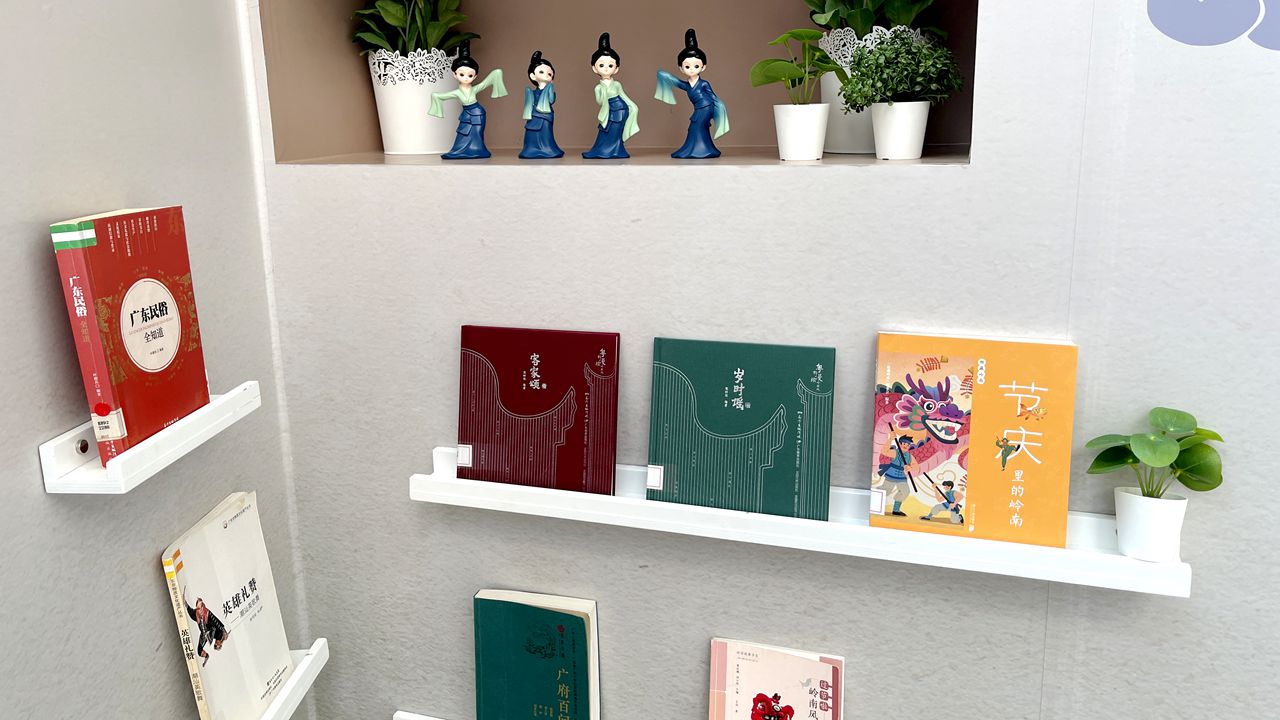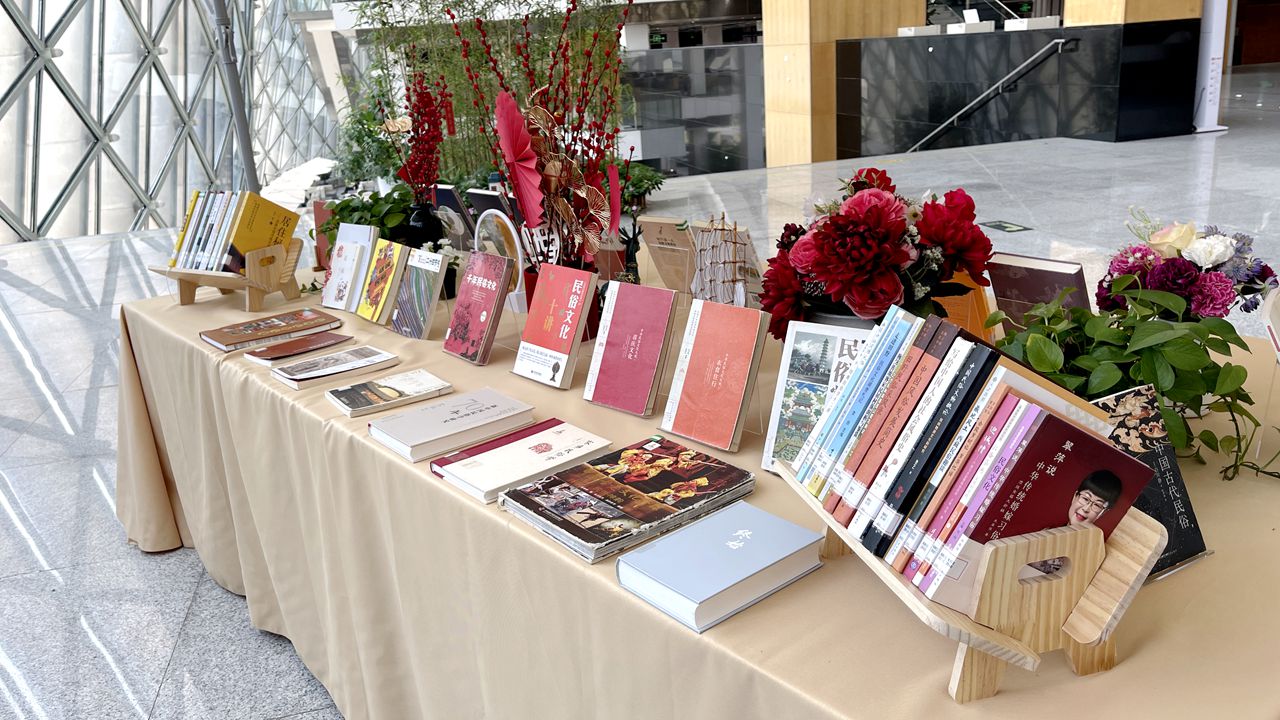SZ Library hosts book exhibition showcasing Spring Festival folk culture
Writer: Liu Minxia | Editor: Zhang Zhiqing | From: Original | Updated: 2025-01-23
The festive season provides a unique chance to immerse oneself in the traditions, customs, and stories that have been passed down through generations and reading is a good way to gain an insight into the roots of various cultural practices. The Shenzhen Library is hosting a book exhibition on folk cultures on the second floor of the library's CBD location, offering visitors a unique opportunity to explore the cultural heritage and narratives behind folk customs, especially the three major ones in Guangdong Province.

A corner of the book exhibition at Shenzhen Library's CBD location. Photos by Liu Minxia
Titled "Remembering folk customs and seeking hometown flavors: recommendatory literature of Chinese folk culture," this exhibition features an array of more than 600 books on Chinese seasonal traditions, local customs, folk arts and historical transformations.
Through text, images, and new year-themed decorations, attendees can unravel the enigmatic world of Chinese folk customs, with a particular focus on the distinctive traditions prevalent in Guangdong Province.

A corner of the book exhibition at Shenzhen Library's CBD location.
Guangdong Province boasts a mosaic of unique folk cultures, blending regional and maritime influences to create a dynamic cultural landscape. Among the province's three principal folk heritages – Cantonese, Chaoshan, and Hakka – common threads interweave with distinct characteristics, each contributing to the region's rich cultural tapestry.
The Cantonese customs during the Spring Festival authentically blend central Han culture with distinctive Lingnan influences. From savoring morning tea and relishing Cantonese delicacies like white-cut chicken to partaking in time-honored traditions such as visiting flower markets and enjoying lion dances and Cantonese opera, these customs reflect a blend of local heritage and cultural expressions.

A corner of the book exhibition at Shenzhen Library's CBD location.
In the bustling city of Shenzhen and Guangzhou, the annual flower market visitation ritual has evolved over centuries, symbolizing not just historical reverence but also the enduring quest for a better life. Residents imbue flowers with auspicious significance, associating various blooms like peonies and lilies with notions of wealth, prosperity, and harmony, enriching the vibrant culture of the region.
Hakka traditions, deeply influenced by central Han customs, underscore values of filial piety, loyalty, and frugality. From elaborate wedding ceremonies to rich and savory Hakka cuisine, these customs epitomize a cultural ethos rooted in tradition and togetherness. , Festive celebrations feature singing songs, staging lion dances, and other forms of entertainment. Additionally, the Hakka culture includes unique customs such as ancestral worship and gatherings, reflecting the strong sense of kinship and unity among the Hakka people.

A corner of the book exhibition at Shenzhen Library's CBD location.
Celebrations in the Chaoshan region during the Spring Festival are characterized by a fusion of traditional customs and vibrant festivities. The vibrant Yingge dance, with a legacy spanning over 300 years, enlivens the cultural landscape during this festive period. Performers adorned in vivid costumes execute coordinated movements with wooden sticks, a ritual that aims to ward off evil spirits and usher in luck and peace.
In addition to the Yingge dance, traditional festive performances such as dragon and lion dances, steeped in historical significance, continue to captivate local audiences. The meticulous art of brewing Gongfu tea, involving a precise sequence of up to 21 steps, denotes the region's time-honored customs and community bonds through shared traditions.
Those who're intrigued by these customs are encouraged to explore the exhibition for a deeper understanding and rich insights into these traditions during the Spring Festival holiday.